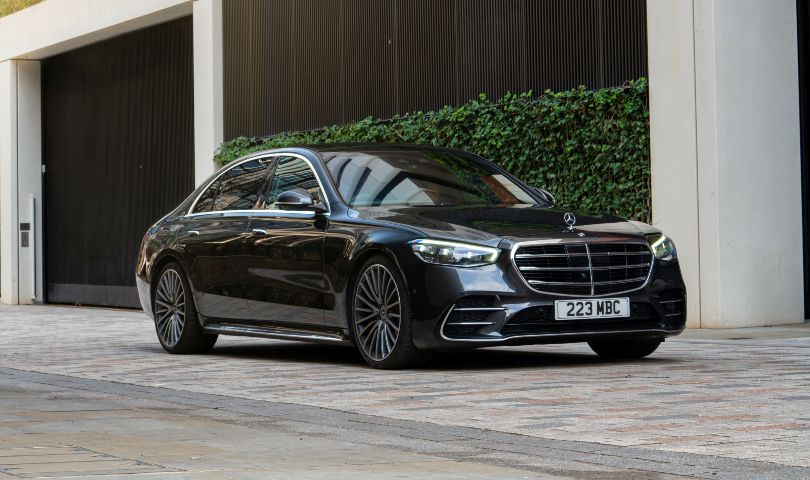Mercedes S-Class fans won’t care about the lack of electrification, writes Mark Gallivan
While Mercedes-Benz continues to launch more niche models within sub niches, it’s the flagship S-Class saloon that remains Stuttgart’s most important car.
This is the four-door luxury saloon that has been a bellwether of technological advance, and for decades has offered a foretaste of automotive road safety systems. Many of these, like anti-lock brakes, have ended up on all cars we drive today.
The first iteration of the S-Class saloon was the W116 in 1972, but go further back and the heraldry is traced to the 1950s Mercedes Ponton. In this seventh generation, the new S-Class is coming out fighting, after taking a bruising from other German luxury brands the last time around.
On test was the S-Class S350d diesel, priced at €123,875. Mercedes sold 90 S-Class units in the first three quarters of 2021. Eighty per cent of those sales were diesels, and most were specified in either grey or black.
Though conspicuous luxury saloons with no electrification are struggling to sell, S-Class fans have strict expectations of constant certainties.
The exterior design is a welcome uplift from the angular shape of the last S-Class. The smoother profile, with a new grille and headlight design, has largely regained the elegance of older S-Class models. By ditching the bulbous rear light for slimmer LED units, Mercedes has made less of the car’s existential bulk.
For the first time on an S-Class, the door handles pop out to allow access, and recess flush into the doors when driving off. Rear wheel steering is now an option, so manoeuvring the big S-Class in tight spaces will prove less of a chore. Boot space is 550 litres.
Facial Recognition
The biggest change inside the cabin is the adoption of a large portrait tablet-shaped touchscreen that houses a myriad of primary functions. Disappointingly, the MBUX operating system does not have a primary rotary controller, though the voice recognition system works well.
Technology enhancements include facial recognition and, overall, the vast arrays of functions are well located, and all swipe screen functions performed without any lag. Heater controls are in the interface screen, and on test they proved one of the least fiddly virtual heater controls we’ve encountered.
The central console is complemented by a small driver’s display behind the chunky steering wheel, providing clear renderings and menu screens.
Functions within the driver’s binnacle can be operated by four individual column stalks on the steering wheel. Each one hosts touch-sensitive buttons for different commands. All seats have the option of heating and ventilation, with massaging treatments of different intensity.
Whether you’re a business or private owner, the S-Class calmingly siphons away stress and turns big journeys into a hiatus of relaxation. Rear seat passengers are treated to plenty of legroom and headroom.
The six-cylinder diesel engine proved whisper-quiet in the cabin. It is now on par with a petrol unit for smoothness, bar a distant diesel rumble on startup. Gear changes are unobtrusive, and the only clue that cogs were being changed was under harsh accelerating or decelerating.
The new S-Class saloon shouldn’t cost a fortune to run. Mercedes claims a 6.9L/100km consumption (34 mpg), and we achieved 40mpg on a regime of careful driving. The annual motor tax bill is €600.








